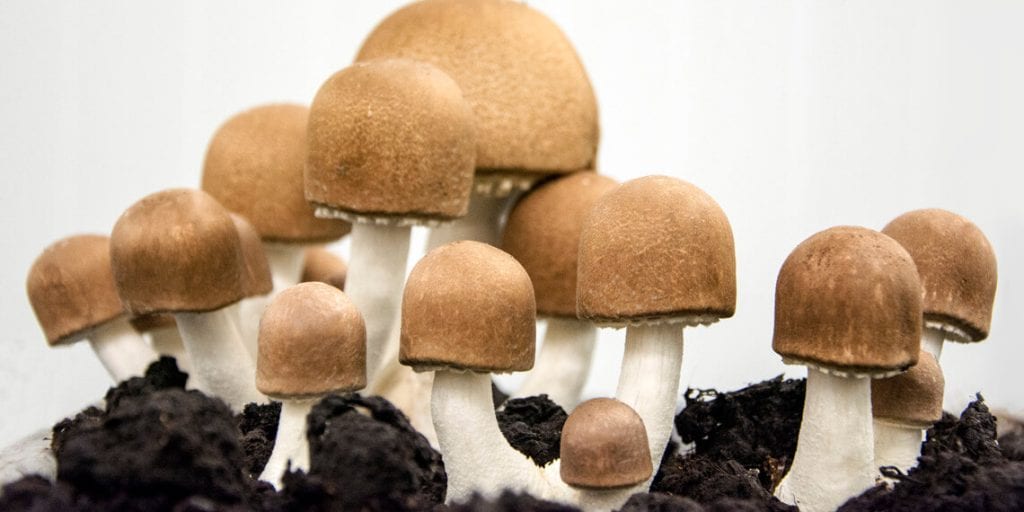Mushrooms are Adaptogens
In addition, it has been observed that the same mushroom can on the one hand stimulate a too weak immune system and, on the other hand, balance a too active immune system – as is the case for allergies and autoimmune diseases. Practice shows very clearly that mushrooms have a regulating effect on our body systems and are therefore among the adaptogens. More and more scientific studies confirm this fascinating effect.
The definition of adaptogens
The Russian scientist Dr. Nikolai Lazarev defined an adaptogen as follows back in 1947: “A substance that allows the body to counter various physical, chemical and biological stress factors through the development of an unspecific resistance. This enables the organism to adapt to circumstances in which it is exposed to high stress.”
Israel I. Brekhman and Dr. I. V. Dardymov described adaptogens in more detail in 1968:
- Adaptogens are not toxic and have minimal side effects. They are not harmful for the body.
- Adaptogens bring about an unspecific response of the organism to stress; the body receives the strength to resist or adapt. A reserve of adaptogenic strength is gathered that can be used in acute stress situations. Contrary to stimulants, the vital energy of the cells is not thereby reduced.
- Adaptogens exert a normalising effect on the body, independently of in what direction the deviated from the physiological norm has occurred. They stimulate cell intelligence, strengthen in case of subfunctioning and inhibit hyperfunctioning.
Adaptogens affect the physical regulation systems such as the hypothalamus-pituitary-adrenal axis, the sympathoadrenal system (sympathetic nervous system and adrenal medulla) and the immune system. They also have a secondary effect in the area of the liver, cardiovascular system, pancreas and kidneys.
Substances with adaptogenic properties
The adaptogens primarily include mushrooms or plants that have adapted to extreme environmental conditions, such as cold, extreme altitude, lack of oxygen, strong sunlight or drought. They also include roots that contain the concentrated energy and nutritional density of years of growth and maturing.
If one considers, for example, the places where Cordyceps is found, it becomes clear why it has such a strong adaptogenic effect. It grows at high altitude in the Himalayas with little oxygen, under extreme temperature influences and strong sunlight. The other medicinal mushrooms also contain the substances typical of adaptogens such as polysaccharides and triterpenes.
Substances with adaptogenic properties:
- Polyphenols (flavonoids)
- Terpenes: this is a large group of secondary plant substances that allows plants to grow in their surroundings. Triterpenes and saponins are subgroups of this. They have a similar effect to glucocorticoids. They have anti-inflammatory and hepatoprotective effects, regulate the immune system and exert a strengthening effect on the adrenal glands.
- Polysaccharides (special beta-glucans): plants that contain many polysaccharides regulate the immune system, strengthen vital energy and are Qi tonics (energy suppliers). Non-active substances also influence the effect of the plant or mushroom through improvement of absorption, reduction of toxicity or prevention of side effects.
The body’s reactions to stress
Stress is not exclusively associated with difficult or unpleasant events but can also occur under positive circumstances. What is decisive is the type of reaction of our body to changes in the environment and a resulting disturbance of the so-called homeostasis. This means the principle that applies to all living creatures or preserving or restoring the achieved (dynamic) equilibrium in relation to fluctuating life conditions. This applies for example to physical balance, but beyond this in a transferred sense also to the tendency of the organism to compensate for mental tension in a self-regulatory manner.
It is only chronic stress that has effects on our body and mind. This effects still last after the occurrence that triggered the stress is over. The type, strength and effect of stressors are individually very different. Possible stress factors include viruses, bacteria, chemical substances, noise, an extreme climate, allergens, radiation, electromagnetic waves, operations, pregnancy, birth, trauma, severe illnesses, toxins or strong emotions.
The hypothalamus is our control centre and is responsible for homeostasis. It has two ways of responding to stress: through the nerval or the endocrine channels. Both lead to the release of stress hormones, which trigger the stress response of the body. After a stressful event, the hypothalamus is immediately activated.
The stress response is through two different physiological channels
- HPA system (hypothalamus-pituitary-adrenal): this is the endocrine channel. The release of CRH (corticotropin-releasing hormone) is stimulated in the hypothalamus. This triggers the release of ACTH (adrenocorticotropic hormone) in the pituitary gland, which in turn stimulates the adrenal cortex to produce glucocorticoids and especially cortisol. This procedure serves the mobilisation of energy.
- SAS (sympathoadrenal system): this is the nerval channel, which is also called the “fight-or-flight response”. Through the sympathetic nervous system, the hypothalamus additionally stimulates the adrenal medulla to form catecholamines (adrenaline, noradrenaline). The hypothalamus and pituitary gland are the interface between the nervous and hormone system.
Cortisol is the stress hormone for the mobilisation of energy. The body needs energy to fight or flee. This means it needs energy to be able to react to the stressful event. Cortisol triggers the release of amino acids from muscle proteins. These amino acids are used in the liver for the synthesis of glucose (gluconeogenesis). The use of glucose in other tissues is decreased and the muscles use fatty acids so that the brain can be supplied with sufficient glucose. Cortisol regulates blood pressure, cardiovascular functions and the immune system.
Too much cortisol leads, for example, to a suppressed immune system, anxiety, sleeplessness, high blood pressure, insulin resistance, obesity, osteoporosis, imbalance of the sex hormones or polycystic ovaries. Too little cortisol, on the other hand, can lead to depression, sleeplessness, fibromyalgia, low blood pressure, chronic fatigue syndrome (CFS), infertility, impotence among men or premenstrual syndrome (PMS) for women.
Adrenaline prepares the body for physical exertion. It stimulates the heart, raises blood pressure, narrows the small arteries, increases blood flow to muscles and the brain, and releases stored sugar from the liver.
Noradrenaline raises blood pressure, maintains blood circulation and transmits nerve impulses in the autonomous nervous system (sympathetic and parasympathetic). This makes the body capable of fighting or fleeing, in other words to react to changing environmental conditions or stress.
DHEA (dehydroepiandrosterone) is produced by the adrenal cortex and is an antagonist of cortisol. It prevents the binding of cortisol. Cortisol and DHEA are good indicators of the activity of the HPA axis.
The body uses up more energy under stress and it can lead to exhaustion. In addition, more free radicals are produced. These destroy mitochondria and therefore the energy balance of the cells.
There is a distinction between an alarm, resistance and exhaustion phase. In the initial minutes or hours after the event triggering stress, the alarm phase sets in: the SAS and the HPA system are activated to make energy available to the body for enhanced performance. An overactivation occurs. This is followed by the resistance phase, in which the body adapts to the ongoing stress trigger. Through the counter regulation of the parasympathetic nervous system, the overactivation is wound down but remains above the healthy norm. In this phase, psychosomatic illnesses often occur, such as asthma, high blood pressure and ulcers. During the exhaustion phase, the body no longer has adequate adaptation energy and it leads to fatigue and imbalances in an array of physical systems. Frequent consequences include susceptibility to infection, depression, anxiety or premature aging. Ultimately, all organ systems can be affected, as they are all subject to the control of the neuroendocrine system.
About the effect of adaptogens
The regulation of an imbalanced system is through the hypothalamus-pituitary-adrenal axis and through the sympathoadrenal system (sympathetic nervous system and adrenal medulla).
Adaptogens support the whole neuroendocrine system. They especially strengthen the adrenal cortex, thereby counteracting the negative effects of stress; the release of stress hormones is regulated. They enable our body to have an appropriate reaction to changed environmental conditions and minimize the possible damage caused by a long stress reaction. The HPA system is stabilised, delaying or completely avoiding the exhaustion phase.
Adaptogens help to maintain homeostasis in chronic stress situations and to preserve the strength to adapt. This also includes the physiological biorhythm (circadian rhythm), the normal body temperature and cortisol production. Adaptogens have a prophylactic effect by increasing the unspecific resistance of the body towards various stress factors.
Adaptogens also have an anabolic effect. They protect energy reserves and therefore have a tonifying effect. This is important for sportspeople and generally with advancing age. They also have a strong antioxidant effect, which can slow down the biological aging process.
Adaptogens work on a cellular level, they stimulate the mitochondria to produce energy (ATP). ATP is important for physical power and strength.
Hey also improve the liver function. The liver provides glucose for the extraction of energy and it also eliminates toxins. In addition, adaptogens regulate the immune system.
The interplay between emotions, the nervous system and the immune system is being researched in the field of psychoneuroimmunology. Adaptogens affect both the body and the mind through the regulation of the neuroendocrine system. The HPA axis is influenced, thus regulating the entire body system.
The health benefits of adaptogens such as Reishi and Cordyceps:
- for adrenal insufficiency due to chronic stress
- anti-aging by halting physiological aging processes and aging factors: counteracting stress, free radicals, excess cortisol, DHEA deficiency and inflammatory processes
- against anxiety and depression, as they improve the mood, reduce stress and tonify the nerves
- in arthritis, adaptogens have an anti-inflammatory effect and regulate the immune system
- in competitive sports: shorter regeneration phases, better endurance, improved pulse frequency, breathing and circulation support
- improvement of memory, as high cortisol levels lead to the death of nerve cells; regulation of the neurotransmitter level
- strengthens the airways
- in cancer: antioxidant, against stress, regulation of the immune system, reduction of the side effects of chemotherapy and radiotherapy
- strengthens and protects the cardiovascular system: regulates blood pressure and cholesterol, against arrhythmia, strengthens the heart muscle
- beneficial for disturbed digestion, as stress hormones delay digestion and influence the intestinal flora
- for exhaustion: more energy is used up under stress
- regulates the immune system: small amounts of cortisol stimulate the immune response; large amounts suppress the immune system
- protects and strengthens the liver
- for mental and emotional health: lightening the mood and calming the mind
- regulation of the sex hormones: testosterone, progesterone, oestrogen interact with the HPA axis
- for sleep disturbances: circadian cortisol release is destroyed by stress; cortisol helps to synchronise activities, eating and sleeping habits
- against obesity: stress often stimulates overeating, high cortisol levels lead to fat deposits especially on the waist
Source
- Winston, D., Maimes, S.:“Adaptogens – Herbs for Strength, Stamina and Stress Relief“; Healing Arts Press, Rochester, Vermont, 2007
CHOOSE THE RIGHT PROVIDER
There are many suppliers of mushroom powders. You will find trustworthy manufacturers in Germany with controlled organic cultivation. Click here to find out what is important when buying.





